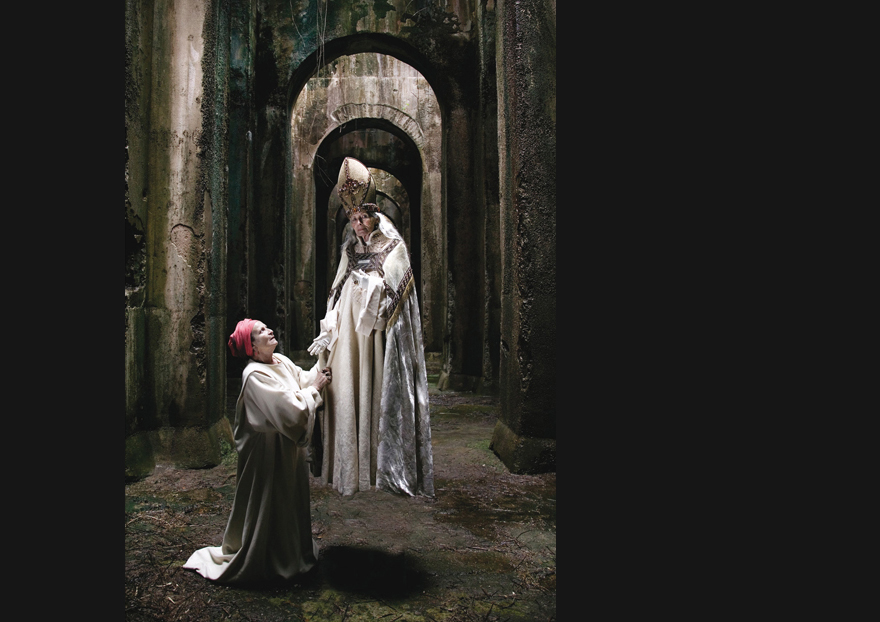The world of Basilè (Rome, 1974) was defined by Achille Bonito Oliva as “an iconographical universe unfolding between technological mannerism and pictorial surrealism”, generating “an iconographical hybridisation between East and West” (Thisoriented. Second stage, curated by A. Bonito Oliva, Biasa Artspace Publisher 2009). Eastern suggestions – Basilè recently moved to Bali – actually coexist with his being deeply rooted in the Roman world.
The search for beauty and balance between masses, as well as the chromatic combinations, characterise his approach, whose ultimate purpose is always beauty.
Beauty and exoticism become the absolute protagonists of images that ooze mysterious sensuality, like the Eastern priestess holding an animal skull in her hands and hiding her head in the mane of her hair, in a reference to Magritte. Markedly surrealist undertones permeate these images of Eastern characters, lost in the middle of desolate landscapes, among distant architectural structures, overlooked by livid, gloomy skies.
These calibrated iconographical images inhabit surreal and virtual worlds, digitally created from photographs. For the realisation of these photographs, the scenery was arranged like on a movie set, moulding reality through fantasy, transporting it to an oneiric dimension, out of time and far beyond a precise and unequivocally identifiable physical space. These beautiful and restless images reduce the contrasts of the Old World to unity, combining sacredness and profanity, future and tradition, East and West.


